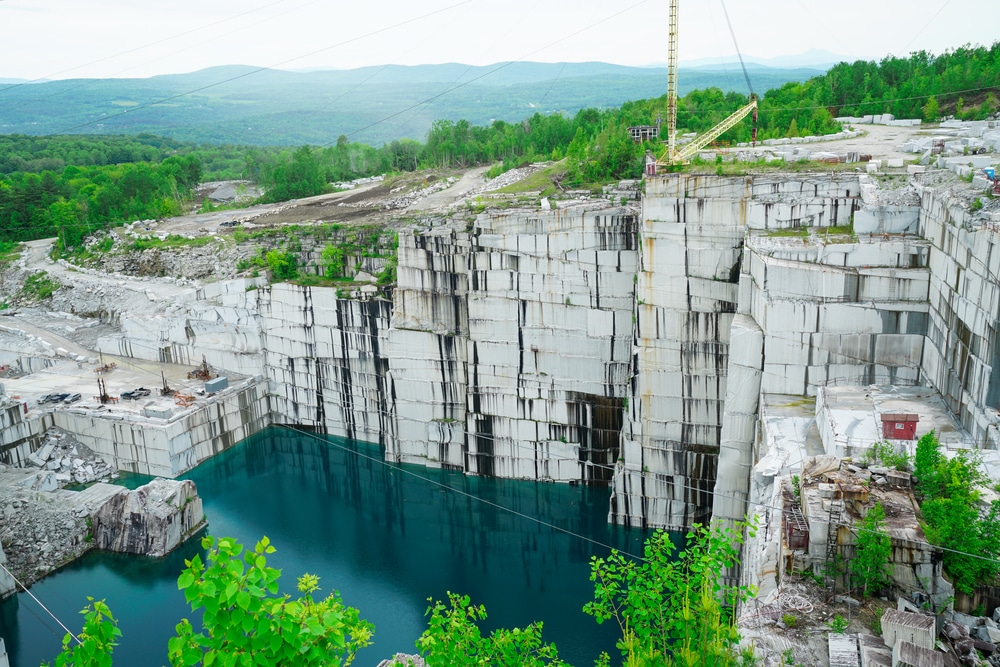Journeying Via Granite Quarries in South Africa: A Visual Odyssey
Journeying Via Granite Quarries in South Africa: A Visual Odyssey
Blog Article
Unearthing the Rich History and Lasting Practices of Granite Quarrying
As we stand on the precipice of discovering the complex tapestry of granite quarrying, a trip through time reveals not simply the physical act of extracting rock but also the cultural and historical importance woven into the very material of this method. From the ancient beginnings that laid the structure for contemporary quarrying methods to the sustainable methods that are shaping the future of this sector, each sculpt mark on granite surface areas informs a story waiting to be discovered (granite quarries in south africa). The legacy of granite quarrying extends much past plain extraction; it is a testimony to human ingenuity, resilience, and the long-lasting appeal of this magnificent stone
Ancient Origins of Granite Quarrying
Going back to old civilizations, the technique of quarrying granite has actually been an essential component of human background and architectural development. The earliest evidence of granite quarrying go back to old Egypt, where enormous pyramids and complex sculptures were crafted from this sturdy rock. The Egyptians utilized primitive tools to remove granite blocks from quarries, showcasing the importance of this product in their significant buildings.
Moving onward in history, the Greeks also made substantial contributions to the quarrying of granite. The Greeks used granite in numerous building wonders, such as holy places and statues, showing their skill in shaping and carving this durable rock. The Romans further refined the techniques of quarrying granite, utilizing innovative tools like blades and hammers to remove and shape granite for their iconic structures.
Via the centuries, the method of quarrying granite has progressed, with contemporary technologies improving performance while preserving the classic allure of this natural stone - granite quarries in south africa. From ancient people to contemporary building contractors, the heritage of granite quarrying remains to shape our world
Advancement of Quarrying Methods
The advancement of quarrying techniques has actually been marked by a continual progression in the direction of greater efficiency and accuracy in extracting granite. From the basic techniques utilized by our ancestors to the sophisticated modern technologies used in modern quarrying procedures, the sector has gone through substantial advancements. Early quarrying strategies involved manual work with standard devices such as knives, hammers, and wedges to draw out granite blocks from the planet. As worlds advanced, techniques like fire-setting and primitive nitroglycerins were introduced to promote the extraction process.
In even more recent times, the development of machinery changed the quarrying market, making it possible for quicker extraction prices and increased productivity. Technologies such as ruby wire saws, high-pressure water jets, and pneumatic drills have become conventional in contemporary quarries, enabling specific cutting and decreased waste. Improvements in computer-controlled devices and 3D modeling have actually enhanced quarrying procedures, leading to minimal environmental impact and boosted sustainability practices. As the need for granite continues to climb, the development of quarrying techniques remains integral to meeting market needs successfully and sustainably.
Social Importance of Granite
Granite holds a profound cultural significance throughout various civilizations due to its long-lasting existence in building work of arts and prized monuments. From the majestic pyramids of Egypt to the elaborate carvings of the Angkor Wat temple in Cambodia, granite has actually been a material of option for revealing majesty and longevity in social heritage. In ancient Rome, granite columns decorated holy places and public structures, signifying strength and permanence. The cultural relevance of granite prolongs beyond its physical characteristics; it personifies strength, security, and timelessness, making it an icon of sustaining legacies and traditions.

Lasting Practices in Quarrying
In the middle of the abundant background of granite quarrying and its social importance lies a growing emphasis on lasting techniques within the market. As environmental understanding and worries about resource deficiency have increased globally, the quarrying field has significantly accepted sustainable methods to lessen here are the findings its influence on the setting and surrounding communities.

In addition, recovery and rehabilitation of quarry sites post-extraction are essential to sustainable practices. By restoring quarried areas to a natural or beneficial state, such as producing wild animals environments or entertainment areas, quarriers can balance out the environmental impact of their operations and add favorably to the neighborhood ecosystem.
Heritage of Granite Quarrying
With a historical backdrop steeped in workmanship and commercial progression, what sustaining influence has granite quarrying left on the landscape of modern-day society? The tradition of granite quarrying goes beyond plain extraction techniques; it has actually formed architectural marvels, city landscapes, and cultural heritage worldwide. The resilient nature of granite has made it a recommended selection for monuments, buildings, and facilities, standing as a testament to the skill and creativity of quarry employees across generations.
Moreover, the financial impact of granite quarrying can not be neglected. The sector remains to give job opportunity and drive local economic situations in regions where granite extraction prevails. It has additionally stimulated technological innovations in quarrying methods and tools, bring about a lot more effective and lasting techniques.
In terms of sustainability, the tradition of granite quarrying includes initiatives to minimize view publisher site ecological effects via recovery projects and accountable source management. By balancing economic interests with ecological stewardship, the industry makes every effort to guarantee that future generations can proceed to profit from this enduring natural source.
Conclusion

Report this page